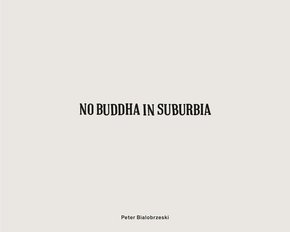| Verlag | Hartmann Projects |
| Auflage | 2019 |
| Seiten | 168 |
| Format | 24,6 x 30,8 x 1,6 cm |
| Gewicht | 817 g |
| ISBN-10 | 3960700318 |
| ISBN-13 | 9783960700319 |
| Bestell-Nr | 96070031A |
(Please scroll down for english version)
Für "No Buddha in Suburbia", kehrt Peter Bialobrzeski, nach seinem letzten Projekt über Deutschland "Die zweite Heimat", nach Asien zurück. Diese neue fotografische Studie über Gesellschaft und Städtebau ist Ergebnis einer Einladung des Goethe Institutes nach Mumbai. Mumbais Vorstädte zählen zu den flächenmäßig größten und dichtest besiedelten urbanen Räumen unserer Erde. Im Gegensatz zum westlichen, eher beschaulichen Verständnis von Suburbia, findet man hier dystopisch anmutende, für uns kaum vorstellbare Lebensbedingungen vor, die von Müll, Luftverschmutzung und Lärm dominiert sind. Eine unkontrolliert anmutende Mischung halbverfallener Gebäude, brandneuer Hochhäuser, Slums, Plakatwänden und Hochstraßen prägen das Stadtbild. Die Bevölkerungsdichte beträgt unvorstellbare 22.000 Menschen/km2! In seinen neuen Bildern verdichtet Peter Bialobrzeski die intensiven und komplexen Eindrücke einer Stadt zwischen lokalen Traditionen und Kulturen und den ungehemmten Kräften der Globalisierung in eindrucksvollen Tableaus. Peter Bialobrzeskis Arbeiten wurden in Europa, USA, Asien und Australien ausgestellt. Er gewann unter anderen Preisen zweimal den World Press Award (2003 und 2010) und wurde 2012 mit dem Erich Salomon Preis der DGPh ausgezeichnet. Rahul Mehrotra, der Autor des Textes, ist praktizierender Architekt in Mumbai und unterrichtet an der Graduate School of Design an der Harvard University, wo er Professor für Stadtplanung und Städtebau ist.
After focusing on his native Germany in his last project, "Die zweite Heimat", Peter Bialobrzeski has returned to Asia. For his new case study of society and urban planning, No Buddha in Suburbia," he followed an invitation from the Goethe-Institut to photograph in Mumbai. The suburbs of Mumbai are among the largest urban sprawls on the planet. Contrary to Western connotations of the word "suburbia," this area is a dystopian environment with horrendous living condition s that are dominated by trash, smog, and noise. The overpopulated streets are lined with an eclectic mix of dilapidated buildings, brand-new high-rises, slums, billboards, and elevated highways-and the population density is an incredible 22,000 people per square kilometer! Bialobrzeski captures intense and complex impressions in impressive tableaux that are presented in this publication for the first time. Peter Bialobrzeski's work has been exhibited in Europe, the United States, Asia, Africa and Australia. He is the recipient of numerous awards, including the prestigious World Press Photo Award (2003 and 2010). In 2012 he was granted the Dr. Erich Salomon Award by the German Society of Photographers. The author of the essay, Rahul Mehrotra, is a practicing architect works in Mumbai and teaches at the Graduate School of Design at Harvard University, where he is Professor of Urban Design and Planning.

